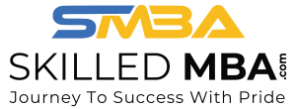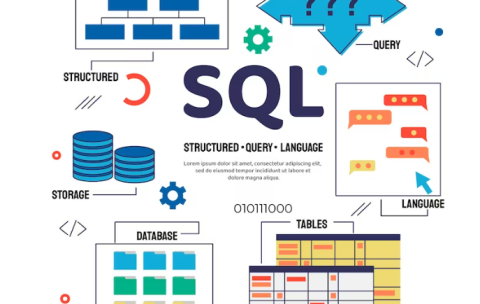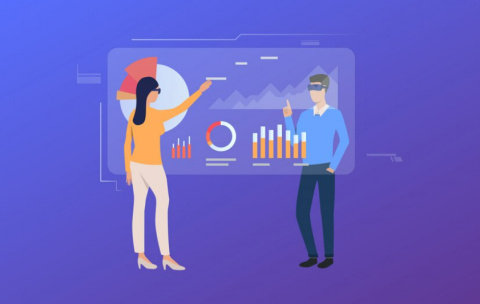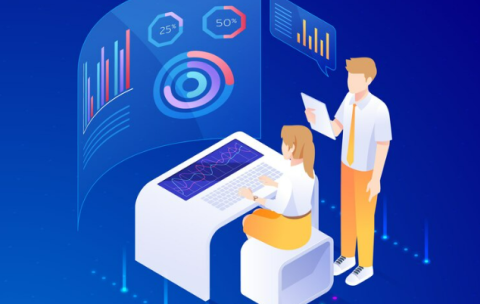Popular Instructors
All Information Technology Courses
Looker Data Analytics – Unveiling Insights with Looker Data Analytics
Unveiling Insights with Looker Data Analytics is an in-depth course …
What you'll learn
Week 1: Introduction to Looker and Basic Concepts (4 Hours)
Session 1 (2 Hours): Overview of Looker and Business Intelligence
Introduction to Business Intelligence and Looker's Role
Navigating the Looker Interface
Overview of Key Features and Functionalities
Session 2 (2 Hours): Connecting Data and Basic Reporting
Setting Up and Connecting Data Sources
Creating Basic Reports (Looks) and Exploring Data
Introduction to LookML (Looker Modeling Language)
Week 2: Advanced Reporting and Visualization (6 Hours)
Session 3 (2 Hours): Advanced Reporting Techniques
Building More Complex Reports and Dashboards
Exploring Advanced Visualization Options
Utilizing Filters, Parameters, and Derived Tables
Session 4 (2 Hours): Interactive Dashboards and Data Exploration
Designing Interactive and Dynamic Dashboards
Best Practices in Dashboard Layout and User Experience
Analyzing Data Trends and Patterns
Session 5 (2 Hours): Data Exploration and Analytics
Drill-Downs and Detailed Data Analysis
Utilizing Looker for Business Analytics
Sharing Insights and Collaborative Features
Week 3: LookML and Data Modeling (6 Hours)
Session 6 (2 Hours): Introduction to LookML
Basics of LookML and its Role in Looker
Creating and Managing LookML Models
Defining Dimensions, Measures, and Views
Session 7 (2 Hours): Advanced LookML Features
Advanced Model and View Development
Utilizing LookML for Complex Data Relationships
Implementing Data Governance in Looker
Session 8 (2 Hours): Hands-on LookML Workshop
Practical Exercise in Building and Optimizing a LookML Model
Troubleshooting Common Issues in LookML
Best Practices for Scalable and Maintainable Models
Week 4: Business Application and Capstone Project (4 Hours)
Session 9 (2 Hours): Looker in the Business Context
Case Studies: Real-world Applications of Looker in Various Industries
Strategic Decision-Making with Looker
Discussing Ethical Considerations in Data Analysis
Session 10 (2 Hours): Capstone Project and Course Wrap-Up
Developing a Comprehensive Business Analytics Project using Looker
Presentation and Critique of Capstone Projects
Course Summary and Future Learning Pathways
The course should be a mix of lectures, demonstrations, hands-on exercises, and case studies. The capstone project in the final week would allow students to apply their learning to develop a full-scale business analytics project, ensuring they understand not only how to use Looker but also how to apply it strategically in a business context.
Microsoft Excel Power Query, Power Pivot & DAX – Excel Advanced Tools: Power Query, Pivot & DAX Mastery
Microsoft Excel Power Query, Power Pivot & DAX – Excel …
What you'll learn
Week 1: Introduction to Power Query and Data Manipulation (4 Hours)
Session 1 (2 Hours): Fundamentals of Power Query
Introduction to Power Query and its Business Applications
Navigating the Power Query Interface
Basic Data Importing and Transformation Techniques
Session 2 (2 Hours): Advanced Data Handling in Power Query
Merging and Appending Queries
Working with Different Data Sources (Web, SQL, etc.)
Advanced Data Transformations and Cleaning Techniques
Week 2: Power Pivot and Data Modeling (6 Hours)
Session 3 (2 Hours): Introduction to Power Pivot
Overview of Power Pivot and its Role in Data Analysis
Creating Data Models in Power Pivot
Understanding Relationships and Data Model Optimization
Session 4 (2 Hours): Advanced Data Modeling in Power Pivot
Working with Large Datasets
Creating Complex Relationships and Hierarchies
Introduction to Key Performance Indicators (KPIs) in Power Pivot
Session 5 (2 Hours): PivotTables and PivotCharts with Power Pivot
Building Advanced PivotTables and PivotCharts
Using Slicers and Timelines for Interactive Reports
Combining Power Query and Power Pivot for Analysis
Week 3: Introduction to DAX (Data Analysis Expressions) (6 Hours)
Session 6 (2 Hours): Basics of DAX
Understanding DAX and its Syntax
Basic DAX Functions and Formulas
Creating Calculated Columns and Measures
Session 7 (2 Hours): Advanced DAX Functions
Time Intelligence Functions
Advanced DAX Formulas for Complex Calculations
Understanding Context in DAX (Row vs. Filter Context)
Session 8 (2 Hours): Practical DAX Applications
Applying DAX in Real-World Business Scenarios
Using DAX for Data Analysis and Reporting
Hands-On Exercises and Case Studies
Week 4: Integrating Skills and Capstone Project (4 Hours)
Session 9 (2 Hours): Integrating Power Query, Power Pivot, and DAX
Combining Skills for Comprehensive Data Analysis
Best Practices for Building Scalable and Efficient Excel Models
Addressing Common Business Data Analysis Challenges
Session 10 (2 Hours): Capstone Project and Course Wrap-Up
Applying Learned Skills to a Real-World Business Problem
Group Project Presentation and Review
Course Summary and Pathways for Further Learning
The course should include a mix of theoretical instruction, practical demonstrations, and hands-on exercises. The capstone project in the final week should involve a comprehensive business analysis task, enabling students to apply their newly acquired skills in Power Query, Power Pivot, and DAX to a real-world business scenario. This structure ensures that MBA students not only learn advanced Excel features but also understand how to apply these tools strategically for business analysis and decision-making.
R for Data Science – Data Science Proficiency with R
R for Data Science – Data Science Proficiency with R …
What you'll learn
Week 1: Introduction to R and Basic Concepts (4 Hours)
Session 1 (2 Hours): Getting Started with R
Introduction to R and its Importance in Data Science
Setting Up the R Environment (R and RStudio Installation)
Basic Syntax, Variables, and Data Types in R
Session 2 (2 Hours): Data Manipulation Basics
Reading and Writing Data in R
Introduction to Data Manipulation with dplyr
Basic Data Cleaning Techniques
Week 2: Data Analysis and Visualization in R (6 Hours)
Session 3 (2 Hours): Exploratory Data Analysis (EDA)
Conducting EDA with R
Descriptive Statistics and Summarization
Handling Missing Values and Outliers
Session 4 (2 Hours): Data Visualization with ggplot2
Basics of ggplot2 for Data Visualization
Creating Various Types of Plots (Bar, Line, Scatter, Histogram)
Customizing Plots for Clarity and Aesthetics
Session 5 (2 Hours): Advanced Data Visualization
Advanced ggplot2 Features
Interactive Visualization with Plotly
Creating Dashboards and Reports
Week 3: Statistical Modeling and Machine Learning in R (6 Hours)
Session 6 (2 Hours): Introduction to Statistical Modeling
Linear Regression Analysis
Logistic Regression for Categorical Data
Model Diagnostics and Interpretation
Session 7 (2 Hours): Machine Learning Basics in R
Introduction to Machine Learning with R
Building Classification and Regression Models
Evaluating Model Performance
Session 8 (2 Hours): Advanced Topics in Machine Learning
Decision Trees and Random Forests
Clustering Techniques (k-means, Hierarchical)
Introduction to Text Mining and Sentiment Analysis
Week 4: Business Applications and Capstone Project (4 Hours)
Session 9 (2 Hours): R in Business Contexts
Case Studies: Real-World Applications of R in Business
Data-Driven Decision-Making in Business
Ethical Considerations in Data Science
Session 10 (2 Hours): Capstone Project and Course Wrap-Up
Applying R Skills to a Business-Related Data Science Project
Presentation and Discussion of Capstone Projects
Course Summary and Recommendations for Further Learning
The course should include a mix of theoretical instruction, practical demonstrations, and hands-on exercises using R. The capstone project in the final week should involve applying R skills to a real-world business problem, enabling students to demonstrate their ability to use R for data-driven decision-making in a business context.
SAS Analytics Training – Mastering Analytics with SAS
SAS Analytics Training – Mastering Analytics with SAS” is a …
What you'll learn
Week 1: Introduction to SAS and Basic Data Handling (4 Hours)
Session 1 (2 Hours): Introduction to SAS
Overview of SAS Software: History and Industry Applications
Navigating the SAS Environment (SAS Studio, SAS Enterprise Guide)
Basic Syntax and Commands in SAS
Session 2 (2 Hours): Data Management Basics in SAS
Importing and Exporting Data in SAS
Data Manipulation Techniques (SORT, SET, MERGE)
Introduction to SAS Libraries and Data Sets
Week 2: Data Analysis and Reporting in SAS (6 Hours)
Session 3 (2 Hours): Descriptive Statistics and Data Summarization
Generating Descriptive Statistics in SAS (MEANS, FREQ, SUMMARY)
Data Summarization Techniques
Creating Basic Reports and Outputs
Session 4 (2 Hours): Data Visualization in SAS
Introduction to SAS Graphical Procedures (SGPLOT, SGPANEL)
Creating Charts and Graphs for Data Presentation
Customizing Visual Outputs in SAS
Session 5 (2 Hours): Advanced Data Analysis Techniques
Conducting Correlation and Regression Analysis
ANOVA and Other Statistical Tests
Introduction to Predictive Modeling in SAS
Week 3: Advanced SAS Programming and Analytics (6 Hours)
Session 6 (2 Hours): Advanced Data Manipulation
Advanced SAS Functions and Procedures
Data Cleaning and Preprocessing Techniques
Working with Dates and Times in SAS
Session 7 (2 Hours): SQL Programming in SAS
Introduction to PROC SQL for Data Querying
Combining SAS Datasets with SQL Joins
Advanced SQL Queries in SAS
Session 8 (2 Hours): Macro Programming in SAS
Basics of SAS Macro Language
Automating Tasks with Macros
Building and Using Macro Variables
Week 4: Business Applications and Capstone Project (4 Hours)
Session 9 (2 Hours): SAS in Business Contexts
Case Studies: SAS Applications in Finance, Marketing, and Operations
Discussing Ethical Implications of Data Analytics
Integrating SAS Analysis into Business Decision-Making
Session 10 (2 Hours): Capstone Project and Course Wrap-Up
Applying SAS Skills to a Real-World Business Problem
Presenting Capstone Project Findings
Course Summary and Recommendations for Continued Learning
Apache Spark for Big Data Analysis – Unleashing Insights: Spark in Big Data Analytics
“Apache Spark for Big Data Analysis – Unleashing Insights: Spark …
What you'll learn
Week 1: Introduction to Big Data and Apache Spark (4 Hours)
Session 1 (2 Hours): Fundamentals of Big Data
Introduction to Big Data: Concepts and Relevance in Business
Big Data Challenges and Technologies
Overview of the Big Data Ecosystem
Session 2 (2 Hours): Getting Started with Apache Spark
Introduction to Apache Spark and its Advantages
Understanding Spark’s Architecture and Components
Setting Up a Spark Environment (e.g., Databricks or Local Setup)
Week 2: Spark RDDs and DataFrames (6 Hours)
Session 3 (2 Hours): Working with RDDs (Resilient Distributed Datasets)
Creating and Manipulating RDDs
Performing Transformations and Actions on RDDs
Understanding Partitioning and Persistence in RDDs
Session 4 (2 Hours): Introduction to Spark DataFrames
Creating and Using DataFrames in Spark
DataFrame Operations and SQL Queries
Data Aggregation and Grouping Operations
Session 5 (2 Hours): Advanced DataFrame Operations
Advanced Data Processing Techniques
Working with Various Data Formats (JSON, CSV, Parquet)
Data Importing/Exporting Techniques in Spark
Week 3: Spark for Advanced Analytics (6 Hours)
Session 6 (2 Hours): Spark SQL for Big Data Analysis
Using Spark SQL for Complex Queries
Integrating SQL and DataFrame API
Exploring Spark SQL’s Optimization Techniques
Session 7 (2 Hours): Machine Learning with Spark MLlib
Introduction to Spark’s Machine Learning Library (MLlib)
Building Basic Machine Learning Models in Spark
Evaluating Model Performance
Session 8 (2 Hours): Streaming Data Analysis with Spark Streaming
Basics of Real-Time Data Processing
Building Streaming Applications in Spark
Integrating Streaming Data with Static Data Sources
Week 4: Business Applications and Capstone Project (4 Hours)
Session 9 (2 Hours): Applying Spark in Business Contexts
Case Studies: Real-World Applications of Spark in Business
Best Practices for Leveraging Spark for Business Insights
Discussing Ethical and Privacy Considerations in Big Data
Session 10 (2 Hours): Capstone Project and Course Wrap-Up
Developing a Comprehensive Big Data Project Using Apache Spark
Presentation of Capstone Projects
Course Summary and Pathways for Further Learning
The course should be a mix of theoretical explanations, demonstrations, and hands-on exercises, ideally using a cloud-based Spark environment like Databricks for practical sessions. The capstone project in the final week would allow students to apply their learning to a real-world business dataset, ensuring they understand how to use Apache Spark for big data analysis effectively in a business context.
Database Management and SQL – Structured Data Mastery: SQL & Beyond
“Database Management and SQL – Structured Data Mastery: SQL & …
What you'll learn
Week 1: Introduction to Databases and SQL (4 Hours)
Session 1 (2 Hours): Fundamentals of Database Systems
Overview of Database Management Systems (DBMS)
Types of Databases: Relational vs. Non-Relational
Basic Database Terminology and Concepts
Session 2 (2 Hours): Introduction to SQL
Understanding SQL and its Role in Databases
Basic SQL Syntax and Commands
Setting Up a SQL Environment (e.g., MySQL, PostgreSQL)
Week 2: SQL for Data Retrieval (6 Hours)
Session 3 (2 Hours): Basic SQL Queries
SELECT Statements, WHERE Clauses
Working with Columns and Rows
Sorting and Filtering Data
Session 4 (2 Hours): Advanced Data Retrieval
JOIN Operations: Combining Data from Multiple Tables
Aggregating Data with GROUP BY and HAVING Clauses
Subqueries and Nested Queries
Session 5 (2 Hours): Practical SQL Exercises
Hands-on SQL Query Exercises
Case Studies on Data Retrieval in Business Scenarios
Week 3: Database Design and Data Manipulation (6 Hours)
Session 6 (2 Hours): Database Design Principles
Understanding Data Modeling and Entity-Relationship Diagrams
Normalization and Database Schemas
Creating Tables and Setting Primary/Foreign Keys
Session 7 (2 Hours): SQL for Data Manipulation and Management
INSERT, UPDATE, and DELETE Operations
Data Integrity and Transactions
Basics of Stored Procedures and Functions
Session 8 (2 Hours): Working with Real-World Data
Importing and Exporting Data
SQL for Business Analytics and Reporting
Integrating SQL Queries with Business Intelligence Tools
Week 4: Advanced Topics and Practical Applications (4 Hours)
Session 9 (2 Hours): Advanced SQL and Performance Optimization
Advanced SQL Features (e.g., Window Functions, Indexing)
Query Optimization Techniques
Understanding SQL Execution Plans
Session 10 (2 Hours): Capstone Project and Course Wrap-Up
Applying SQL Skills to a Real Business Case
Group Project Presentations
Course Summary and Further Learning Resources
This course would ideally mix theoretical lectures with practical exercises and case studies. Each session should include hands-on SQL practice, progressively building in complexity. The final capstone project should involve a comprehensive business-related database task, requiring students to apply all the skills learned throughout the course. This structure ensures that MBA students not only understand the technical aspects of SQL and database management but also how to apply these skills in a business context.








